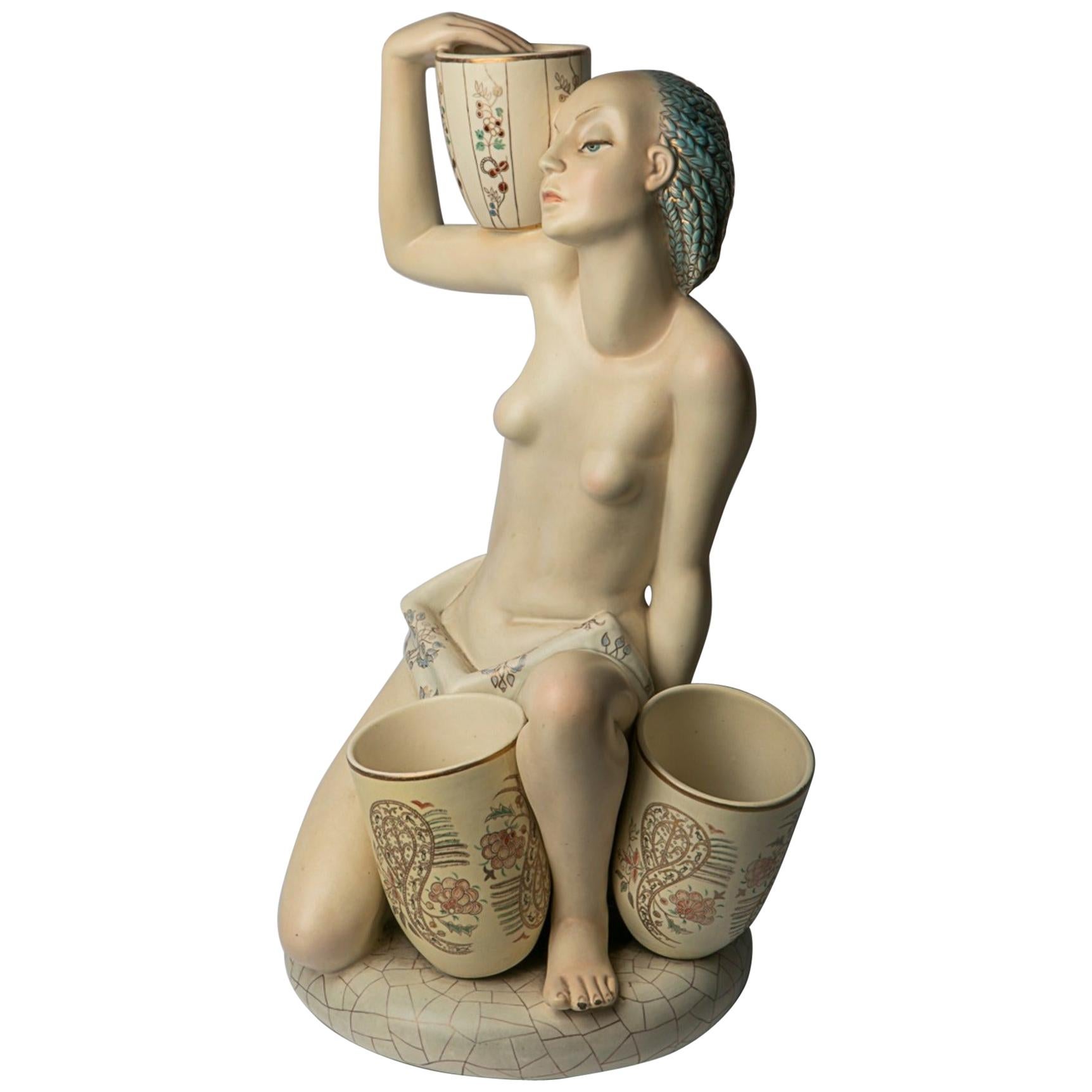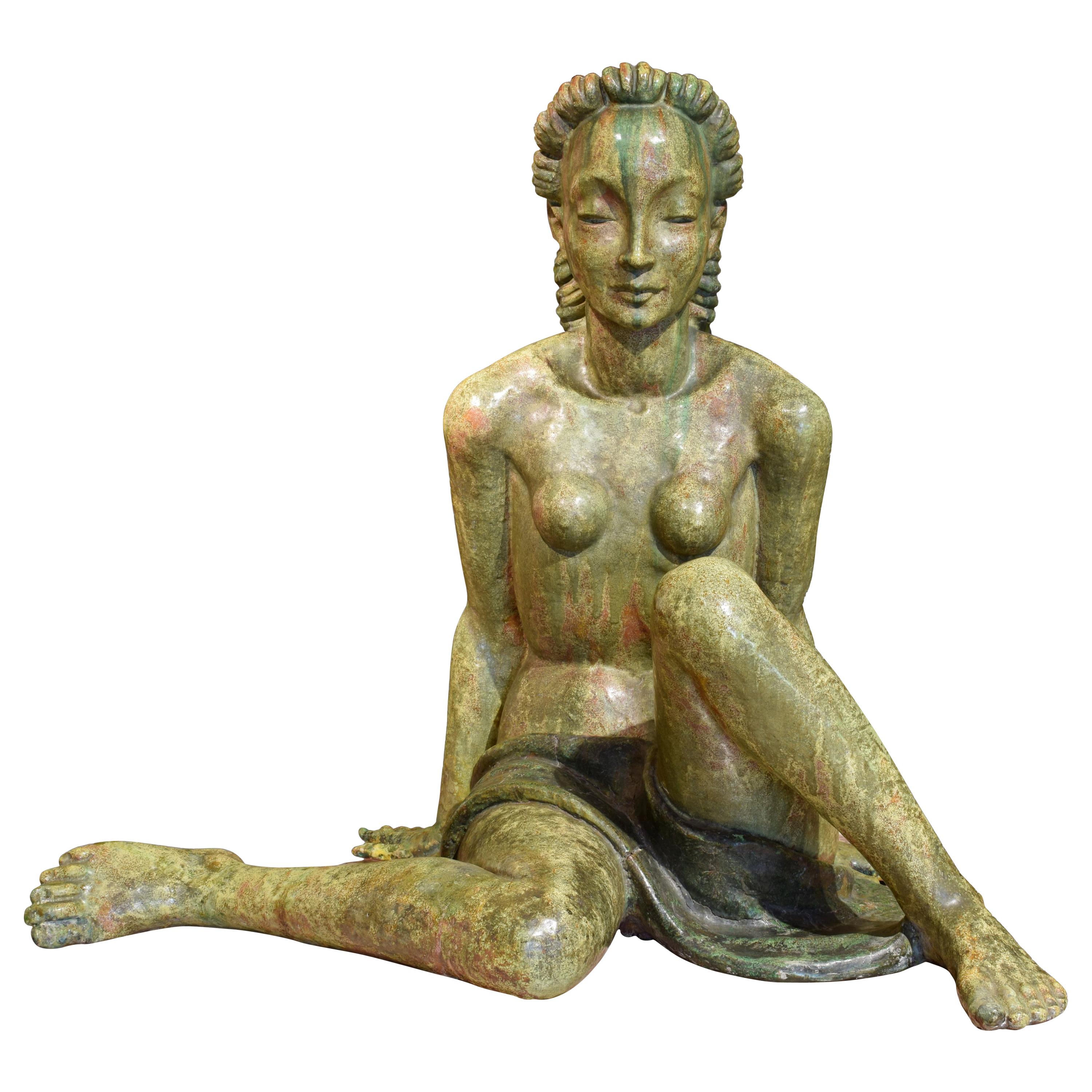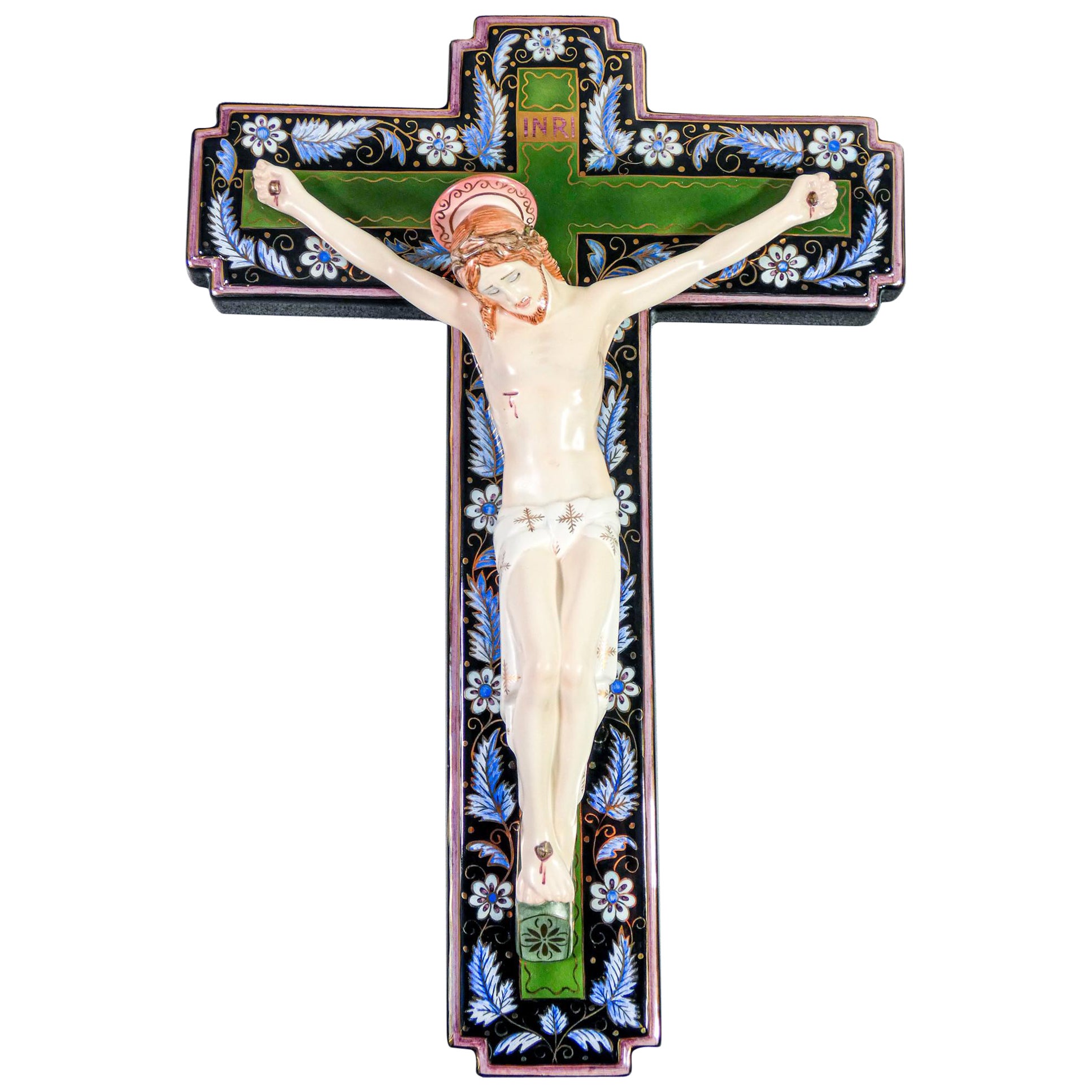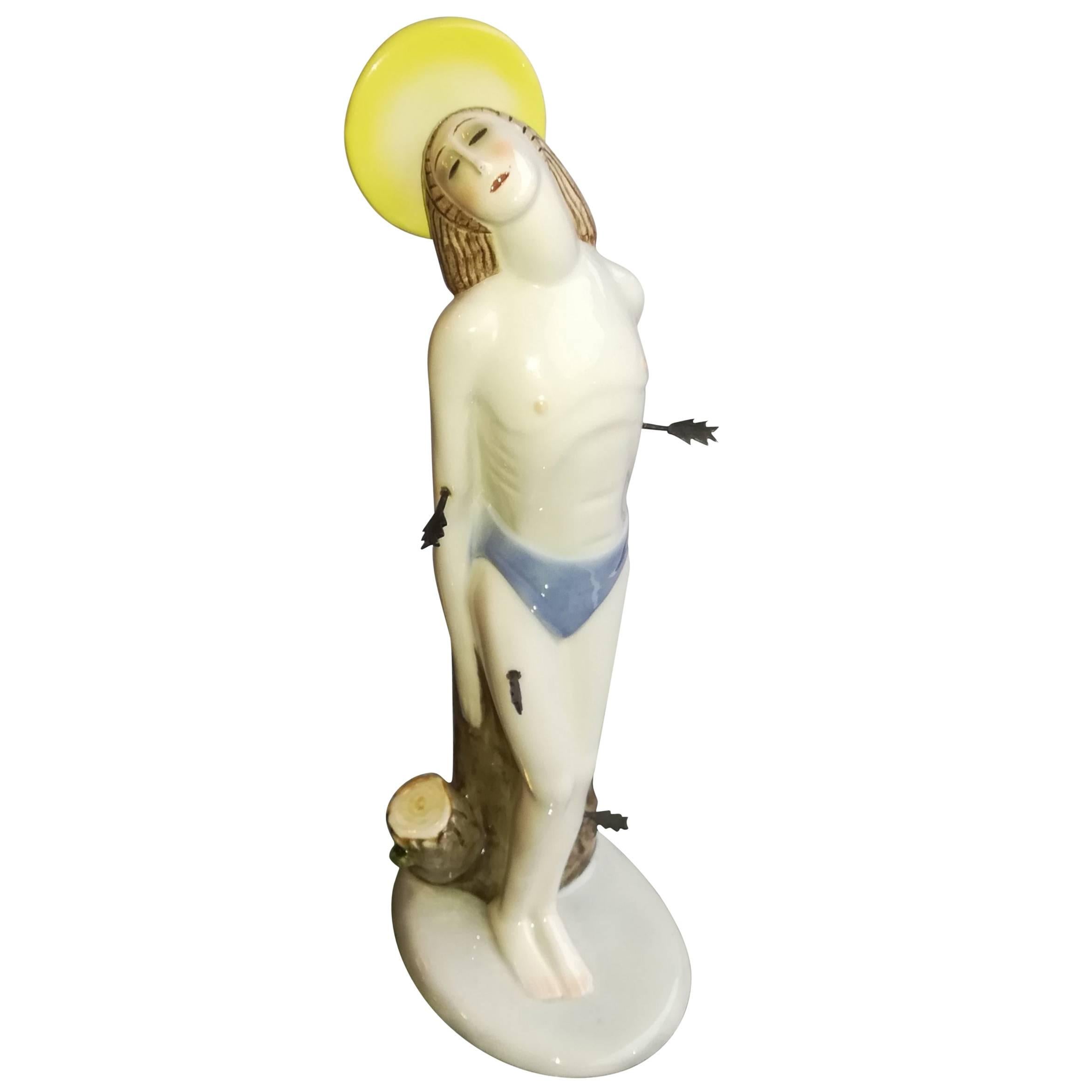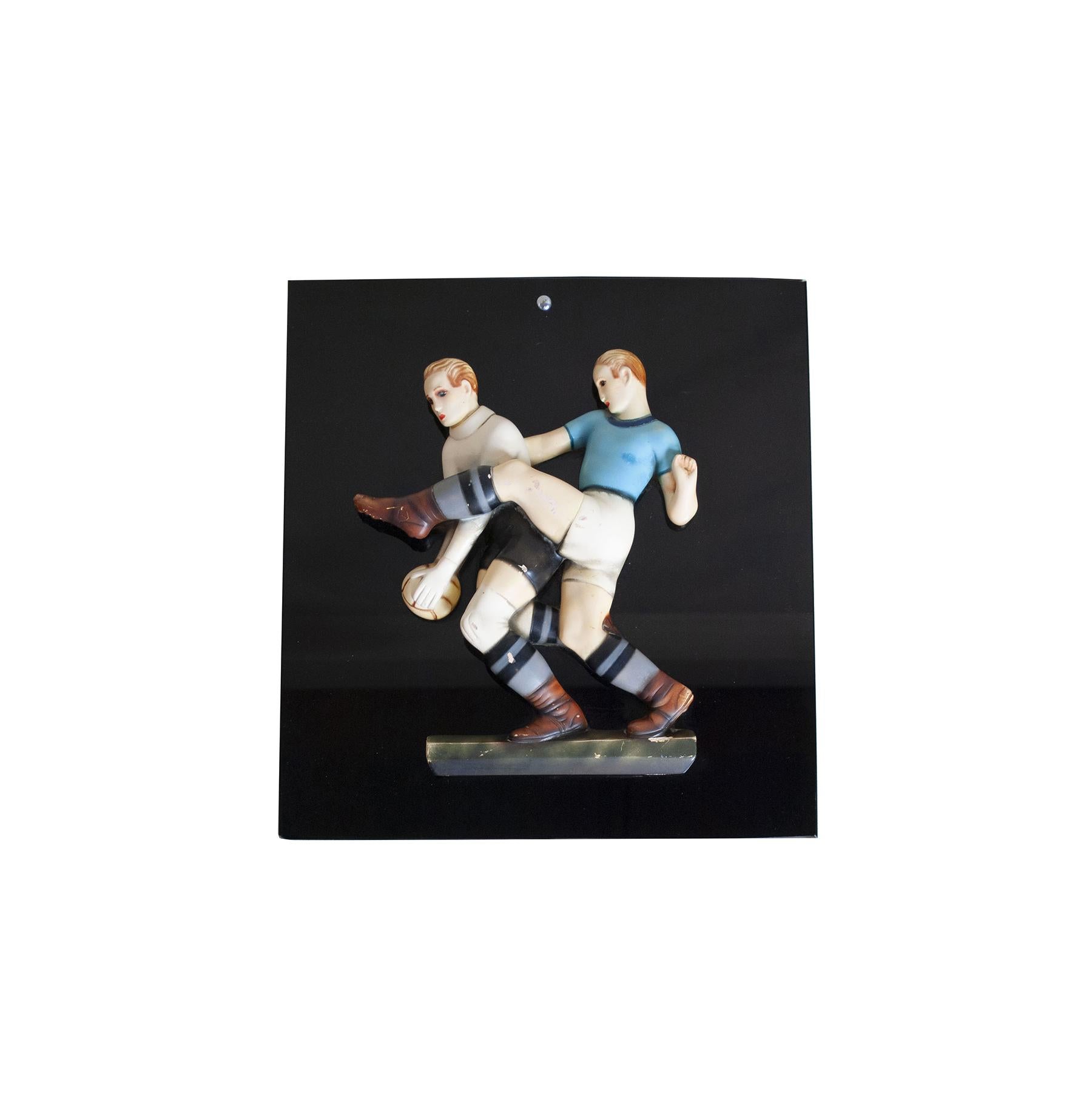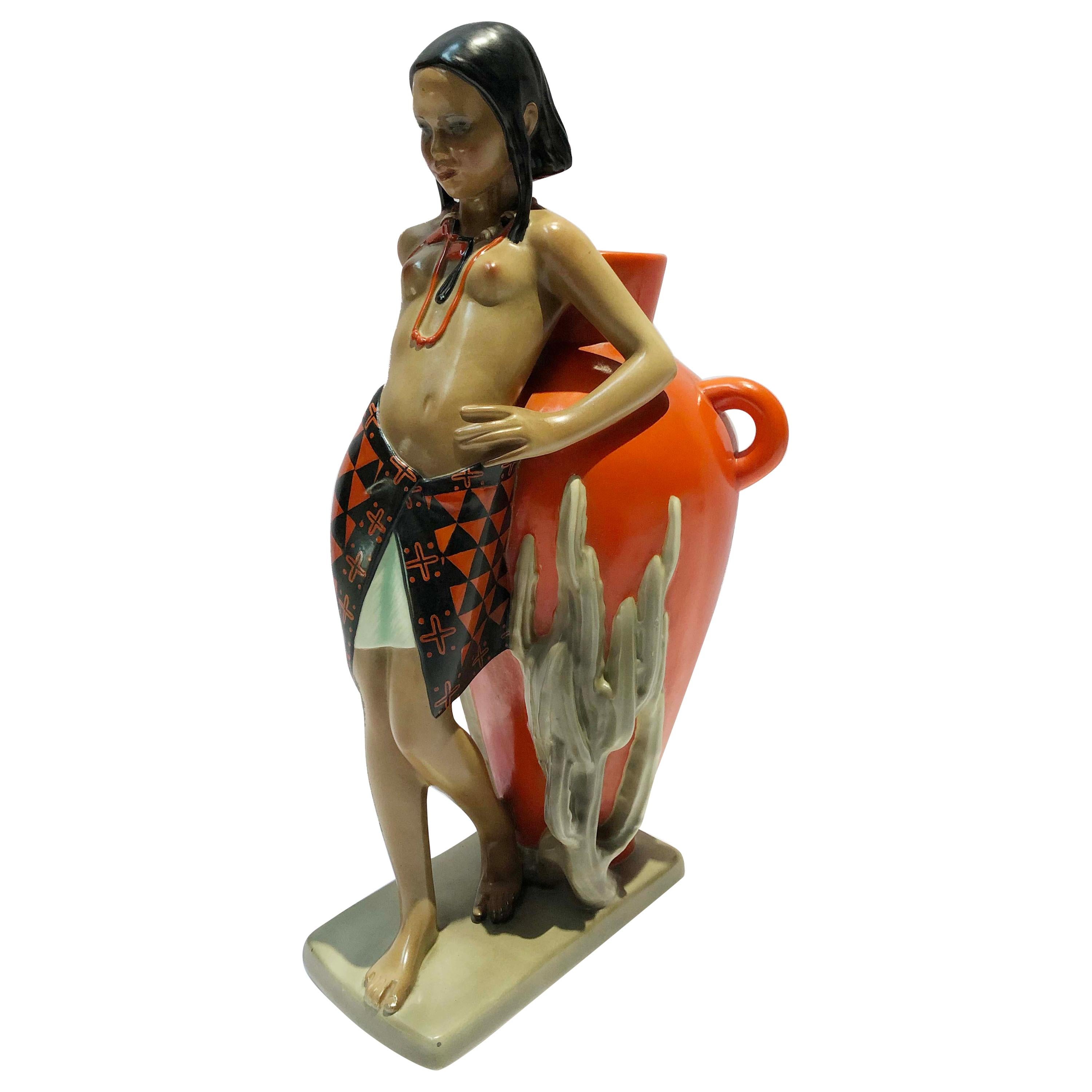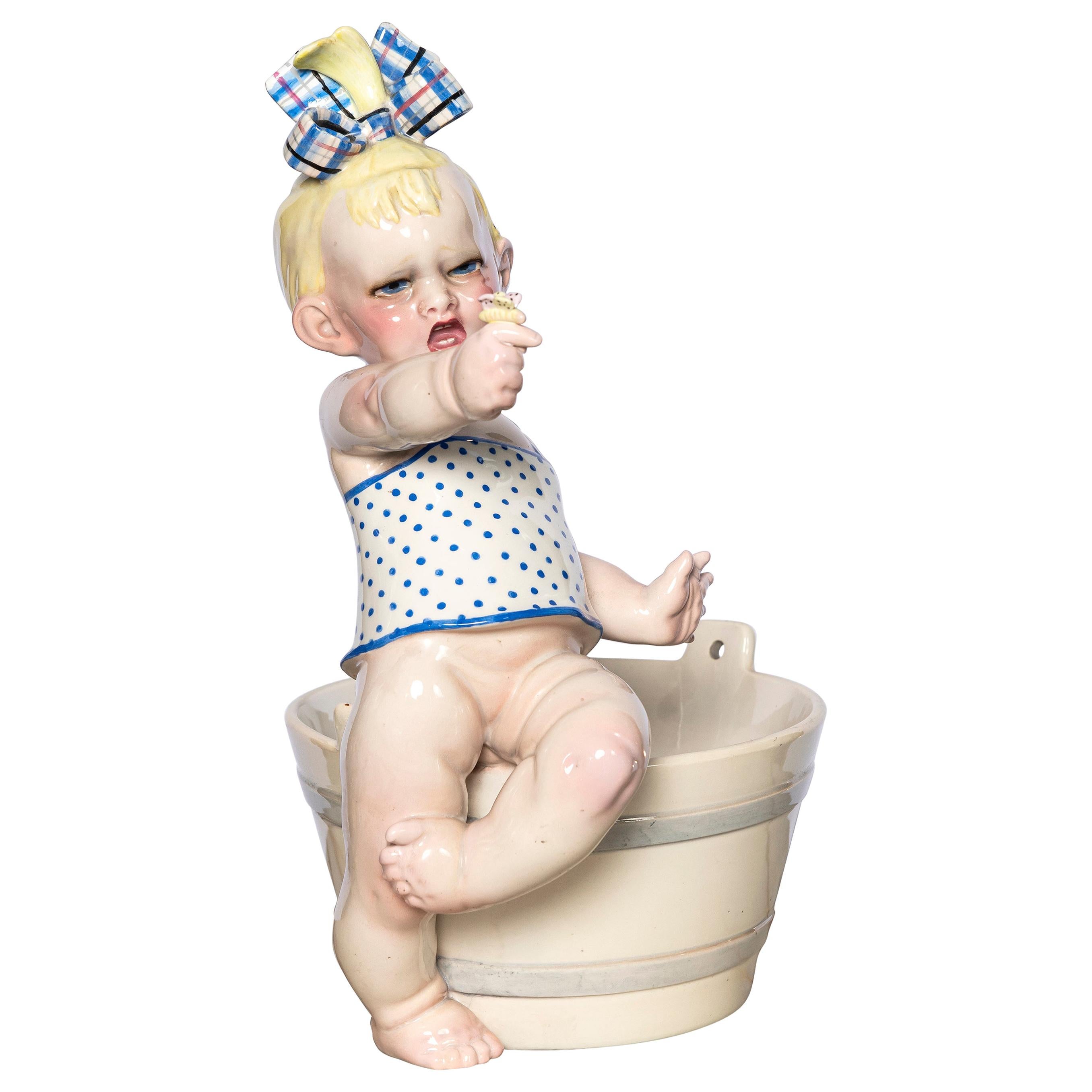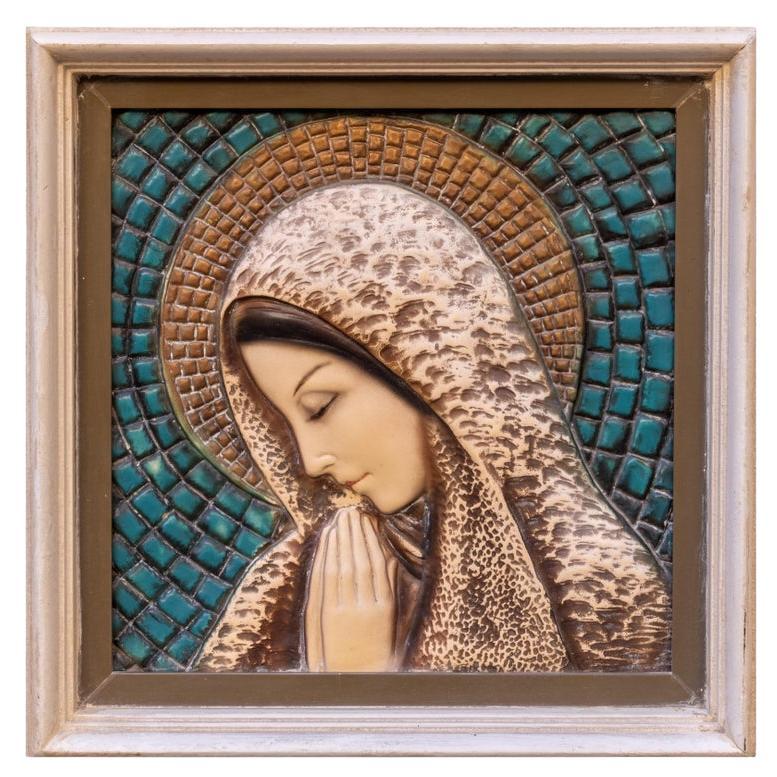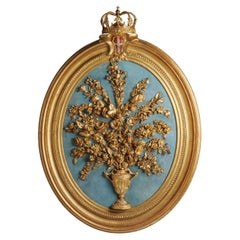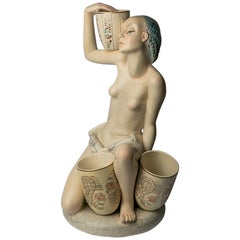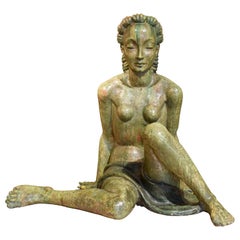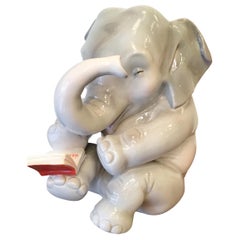
Lenci Ledi, Earthenware, Helen Scavini König, Turin 1936
View Similar Items
Want more images or videos?
Request additional images or videos from the seller
1 of 8
Lenci Ledi, Earthenware, Helen Scavini König, Turin 1936
About the Item
- Creator:Lenci (Maker)
- Dimensions:Height: 14.18 in (36 cm)Width: 9.06 in (23 cm)Depth: 4.34 in (11 cm)
- Style:Mid-Century Modern (Of the Period)
- Materials and Techniques:Earthenware,Polychromed
- Place of Origin:
- Period:
- Date of Manufacture:1936
- Condition:Wear consistent with age and use.
- Seller Location:Milano, IT
- Reference Number:1stDibs: LU1721219334132
About the Seller
4.9
Gold Seller
These expertly vetted sellers are highly rated and consistently exceed customer expectations.
Established in 2015
1stDibs seller since 2015
358 sales on 1stDibs
Typical response time: 1 hour
More From This SellerView All
- Floral carving. Turin, late 18th centuryBy Non-Standard Furniture and LightingLocated in Milano, ITCarved and gilded wooden console table. It rests on four opposing double-curved supports ending in full-bodied curling volutes held by masks; carved female caryatids rest on the uppe...Category
Antique Early 1700s Italian Neoclassical Revival Wall-mounted Sculptures
MaterialsWood
- Applique Console Francesco Bolgiè, Turin, circa 1790By Francesco BolgiéLocated in Milano, ITWall table supported by two legs moved to “S”, connected to the band under the top by carved shelves; grey marble top molded on the edge. The band is carved with pods and finished with a ribbon frame. The uprights end with two curly feet, which are carved on the four faces with overlapping circles and plant motifs; above the feet, a small shelf connects the two uprights. It is carved by a Greek fret with rosettes, surmounted by a classic vase with flowers and finished in the lower part by a leafy head. The whole surface is gouache-gilded. The piece of furniture presented here is to be referred to the Turin production and in particular to the work of Francesco Bolgiè, since the points of contact with his work are stringent. Born in Turin in 1752 to a family of carvers, after a Parisian training, he was a member of the Compagnia di San Luca in 1775 and appointed Royal Sculptor by Vittorio Amedeo, the first of all carvers to obtain this title. After Bonzanigo, Bolgè is the most desired artist at the Savoy court and, although his fame was overshadowed by the greatness of the first, he was a carver of great ability, it is not true that the authorship of the two productions have often been confused. The inventories show that if Bonzanigo was much more used for the production of chairs, screens and frames that required more minute carving, it was mainly Bolgè who was entrusted with the production of furniture and consoles. Entering into the console analyzed here, the first stringent comparison is to be made with the four corner cabinets created for Madama Felicita’s apartment in the Royal Palace. The “S” -shaped legs have the same curl as the foot placed here under the top and the frontal notch of the uprights is identical. The closeness between the carved vase of the console and those placed on the top and between the legs of the corner cabinets cannot be overlooked, even if ours, being placed in a prominent position, is richer and more elaborate. It is possible to find the same curl pattern as a shelf used...Category
Antique 1790s Italian Other Console Tables
MaterialsMarble
- Pair of Sculptures Guanyin Ceramic China, 1912-1949Located in Milano, ITPair of Guanyin sculptures in Dehua porcelain "blanc de chine". The two mirror figures of the goddess of compassion resting on bases of flowers and l...Category
20th Century Italian Mid-Century Modern Figurative Sculptures
MaterialsCeramic
$1,537 Sale Price / set20% Off - Pair of Busts of Emperors and Columns in Ceramic Tommaso BarbiBy Tommaso BarbiLocated in Milano, ITPair of ceramic busts of Roman Emperors resting on ceramic columns, production Tommaso Barbi 1970s. Columns with hexagonal base of white glazed ceramic ornamented with gold piping, s...Category
Vintage 1970s Italian Mid-Century Modern Busts
MaterialsCeramic, Pottery
- Scultura in Bronzo Piero Maggioni Italia XX SecoloBy Non-Standard Furniture and LightingLocated in Milano, ITScultura raffigurante famiglia; presente etichetta con nome dell'artista sulla base.Category
20th Century Italian Mid-Century Modern Mounted Objects
MaterialsBronze
- Fulvio Bianconi Glass Figurine, Venini 1950 circaBy Fulvio BianconiLocated in Milano, ITPolychrome glass figurine with sleeve. Made to a design by Fulvio Bianconi for Venini. Acid signature on the base “Venini Murano Italia”. The figurine...Category
Vintage 1950s Italian Mid-Century Modern Figurative Sculptures
MaterialsGlass
You May Also Like
- Lenci, Italian Ceramic Design Helen Scavini Konig Ragazza di HarrarBy LenciLocated in Buenos Aires, ArgentinaLenci, Italian ceramic Design: Helen Scavini Konig Ragazza di Harrar, 1936 Size: 54 cm in 21.7 Very good condition.Category
Vintage 1930s Albanian Art Deco Figurative Sculptures
MaterialsPorcelain
- 20th Century, Italian Sculpture by Helen König Scavini, Lenci ManufactoryBy Lenci, Helen ScaviniLocated in ITHelen König Scavini, Lenci manufactory "Nude of Woman", e.g. 1927-1936 Signed under the base "Lenci/Italy" Glazed terracotta sizes: H 70 cm x W front 83 cm (W back 55 cm) x D 55 cm The important sculpture, realized in glazed terracotta, is by the famous Lenci Manufactory of Turin (Italy) on model by Helen König Scavini. Of remarkable dimensions, it represents a naked woman, covered of a single cloth to life, sitting with the legs flexed asymmetrically while it supports on the arms with the hands leaned to the plan. The woman has a hieratic expression, big eyebrow arches under which the ethereal eyes are half-closed; the open lips hide a hint of a smile. The loose hair is turned back with big waves on both the head and along the back. The staining of the glazing is on the tones of musky green, which contributes to confer to this woman the appearance of a nymph or a mythological figure. Below the base is found, hand painted, the trademark of the manufacture "Lenci, ITALY". The brand Lenci was registered in Turin on 23 April 1919, sanctioning an activity undertaken some time before by Helen König, wife of the commercial agent Enrico Scavini. The origin of the word Lenci is still controversial today; the earliest bibliography says it derived from a endearment of Elena (Elenchen, as her father called her and that she, stunned him, pronounced Lenci) while the most recent one considers the acrostic Ludus Est Nobis Costanter Industria, perhaps invented by Ugo Ojetti or built as divertissement by the poet Ignazio Vacchetti (Alias Fantasio) on the endearment of Elena. The Lenci manufactory becomes a meeting point for artists and a forge of ideas for the development and realization of dolls and puppets, children’s furniture, and later also artistic ceramics. The first artists to take an active part in the enterprise were Giovanni Riva and Sandro Vacchetti, soon joined by other great names. The success of these felt dolls earned numerous awards to the Lenci Company during the international exhibitions in Zurich, Paris, Rome or Milan. However, the originality of Lenci’s creations was soon put to the test by numerous imitations. To cope with this type of competition, Lenci began to produce artistic ceramics, whose activity began in 1927. The ceramic figures became perhaps even more famous than the dolls in cloth. The subjects ranged from the famous "nudini", the chic little ladies and emancipated women, from fantasy characters to animals, from religious images to the most disparate vases and much more. Many artists collaborated in the realization of the models, among which it is worth mentioning the already mentioned Sandro Vacchetti, artistic director of Lenci from 1922-1934, the same Elena König Scavini, Cläre Burchart, Lino berzoini, Giovanni Riva, Giovanni Ronzan, Deabate Theonesto, Giovanni Pietro Spertini, Marcello Dudovich, Gigi Chessa, Mario Pompei, Nillo Beltrami, Mario Sturani, Giulio Da Milano, Giovanni Grande, Ines Grande, Claudia Formica, Luigi Borione, Camillo Ghigo, Giuseppe Porcheddu, Gino Levi-Montalcini, Abele Jacopi...Category
Vintage 1930s Italian Figurative Sculptures
MaterialsTerracotta
- Lenci Ceramic Elephant 1950 Elena Scavini, ItalyBy LenciLocated in Milano, ITLenci ceramic elephant 1950 Elena Scavini, Italy.Category
Vintage 1950s Italian Other Animal Sculptures
MaterialsCeramic
- Lenci Art Deco Ivan the Russian Boy Pottery Figure by Elena ScaviniBy LenciLocated in Bishop's Stortford, HertfordshireAn attractive and rare Italian Art Deco pottery figure of Ivan the Russian Boy designed by Elena Scavini for Lenci and believed to date from circa 1936. ...Category
Vintage 1930s Italian Art Deco Figurative Sculptures
MaterialsPottery
- Lenci Hand Painted Ceramic Crucifix, Decorator Maria Balossi, Turin, Italy 1930sBy LenciLocated in Torino, ITLENCI hand painted ceramic crucifix, decorator Maria BALOSSI ORIGIN Turin, Italy PERIOD 1930s AUTHOR Maria BALOSSI Decorator at the Turin ceramic factory 'Lenci' from...Category
Vintage 1930s Italian Figurative Sculptures
MaterialsCeramic
- Lenci Ceramic 1931 "San Sebastiano"By LenciLocated in Milano, ITLenci, ceramic 1931, San Sebastiano, autorizzato Giovanni Grande.Category
Vintage 1930s Italian Figurative Sculptures
MaterialsCeramic
Recently Viewed
View AllMore Ways To Browse
Lenci Konig Scavini
Helen Konig Scavini
Helen Konig
15k Gold Figurine
6 Arm Standing Lamp
Antique Cast Iron Shoe Mold
Antique Male Mannequin Head
Cheap Pocket Watches
Dresden Monkey
Hermes Greek God Of Medicine
K Scheurich
Marble Ganesh
Miguel Berrocal On Sale
Mosaic Crucifix
Shelf Sitter
Chased Romantique
Mercedes Pedal Car
Retro Royal Doulton Figurines
